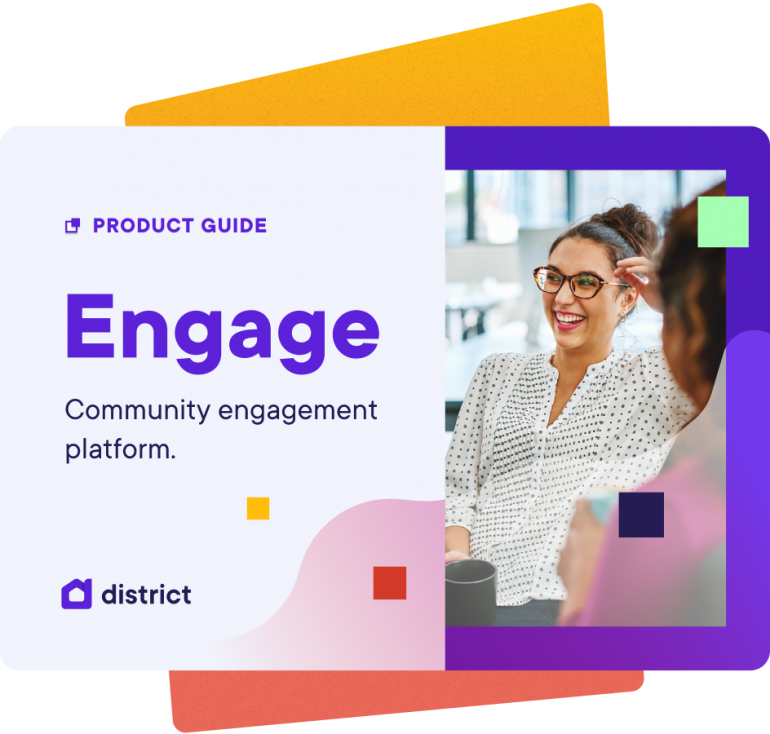Governments at all levels are turning to community engagement strategies to build lasting solutions to society’s needs and challenges.
Giving people the opportunity to meaningfully contribute to projects and policies that affect their lives not only creates better outcomes, but can improve the relationship between governments and citizens.
Which is why it’s important to consider the potential benefits of genuine engagement with young people.
Powerful forces including social media, the internet, climate change and the pandemic have had a profound impact on the opinions, experiences and outlook of today’s youth (people aged 15-24).
Giving young people the opportunity to share their opinions, have their voices heard, and play a meaningful role in addressing the problems facing their communities can be an opportunity to create lasting change.
So, what’s the best way to engage with today’s youth? Before we take a closer look at best practice strategies for engaging young people in public consultation initiatives, let’s set a few ground rules:
Safety first
Before you commence any engagement with young people, especially those under the age of 18, ensure that their safety and wellbeing is your top priority, and that you abide by any national or state safeguarding procedures, such as holding a Working with Children.
Respect and value their contributions
It’s important to respect and value the contributions of young people just as you would adults. They are bringing a unique perspective and experience to the table, so encourage them to freely express their views and ideas.
Inclusion matters
Reach out to youth from a variety of cultural and social backgrounds, and in particular those from marginalised or underrepresented groups, to create an inclusive and safe environment that embraces diversity and equal opportunities for all.
Best practices for engaging youth
As young professionals, students, leaders, youth representatives, digital natives and public opinion influencers, people in the 15-24 age bracket have a lot of capacity. Their first-hand experiences are essential to developing good public policy outcomes.
That’s why it’s important for community engagement practitioners to pay attention to the age balance in their engagement activities, and make changes to the communication strategy if those voices are not being represented.
Even within an age bracket, it’s important to ensure inclusivity. Engagement managers can use their digital reporting tools to track the diversity and gender balance of participants and reach out to the under-represented groups.
Reach out
To engage young people, you could consider partnering with youth or youth-led organisations that fall within your project or policy area. Afterall, helping to develop the capacity of such organisations to meaningfully engage with youth could have long term benefits and help build lasting relationships with young individuals.
Or, you could simply go to the spaces where the youth already are. For young people, that’s social media.
Social media is a great tool for not only engaging youth and amplifying their voices, but also encourages the virtual participation of young people who can’t (or won't) engage in person.
Ensure your community engagement strategy includes targeted awareness campaigns that use friendly and age-appropriate language, and incorporates youth-friendly participation tools.
Be transparent
Young people tend to be sceptical about most things, and especially a government-led initiative! That’s why it’s important to be upfront and honest. From the outset, be clear about their role in the project, and don’t be tempted to try to influence or manipulate their contributions. Explain how their feedback will be used and interpreted, and let them know how their contributions have influenced outcomes.
Being transparent during the process will build trust and help to foster a sense of impact and accomplishment, and encourage a culture of engagement.
Avoid tokenism
Young people have valuable skills and insights, so it’s important to give them an opportunity to contribute throughout the implementation of the project. Beyond engagement tools such as surveys and polls, consider engaging young people in relevant advisory bodies, or activities and events such as conferences, discussions or expert panels, and encourage them to get involved in the design, testing and evaluation stages.
By following these best practices, community engagement practitioners can create an environment that values and respects the contributions of the next generation. Meaningful youth engagement leads to enriched community initiatives, and helps to bring a unique perspective to addressing the challenges and opportunities of the future.
Ready to empower the voices of the next generation? Get started with District Engage, the community engagement platform designed to help you create meaningful connections and drive lasting change.



